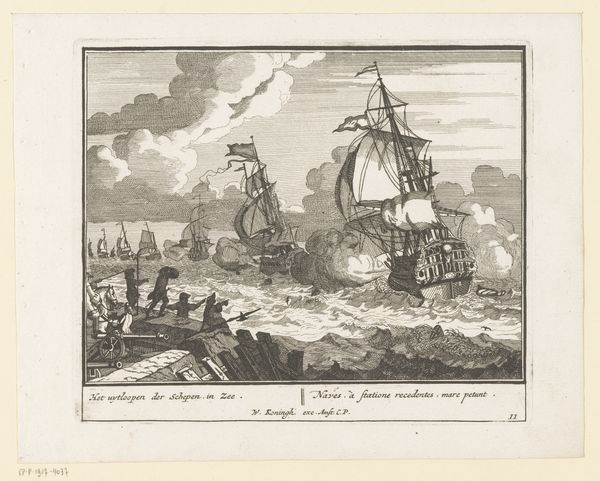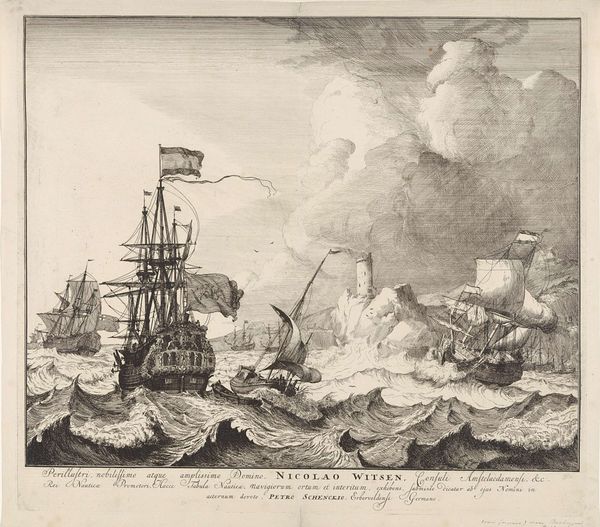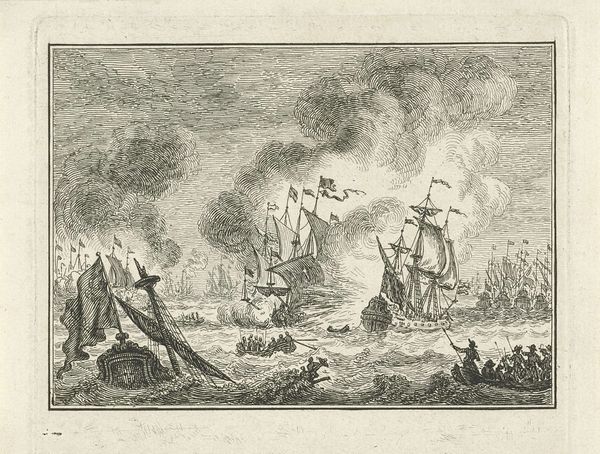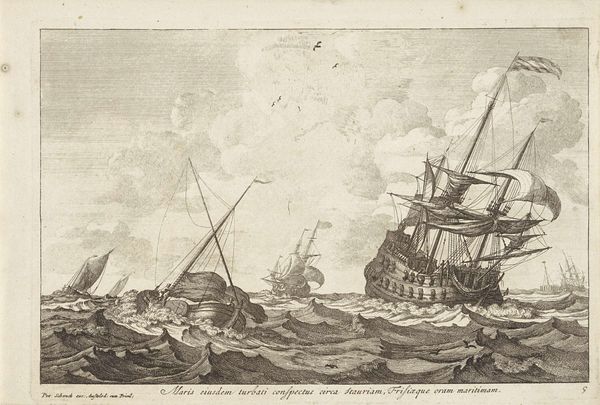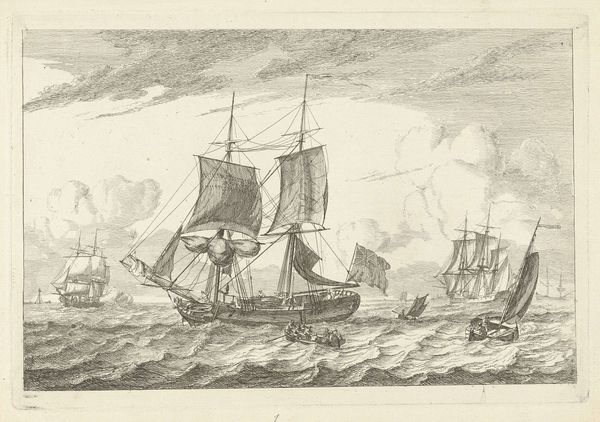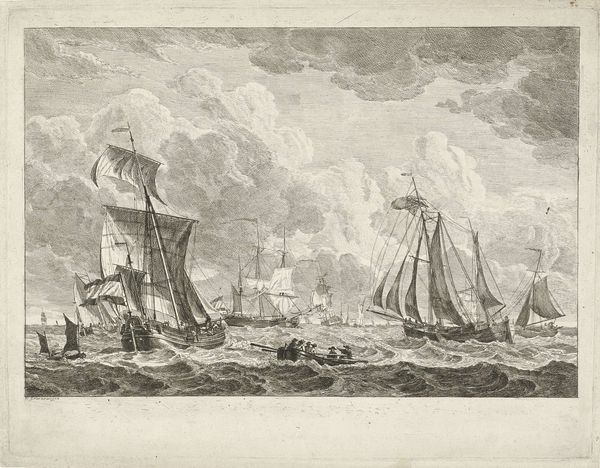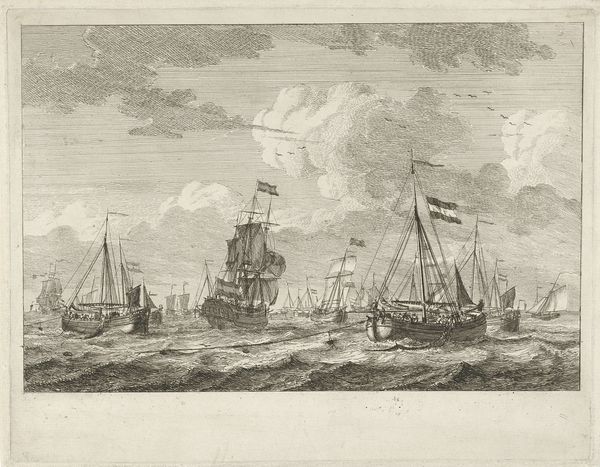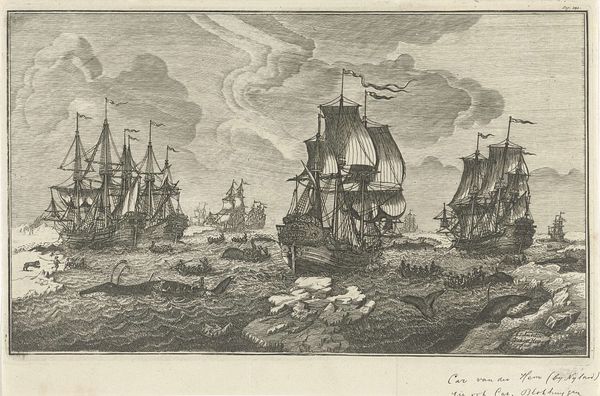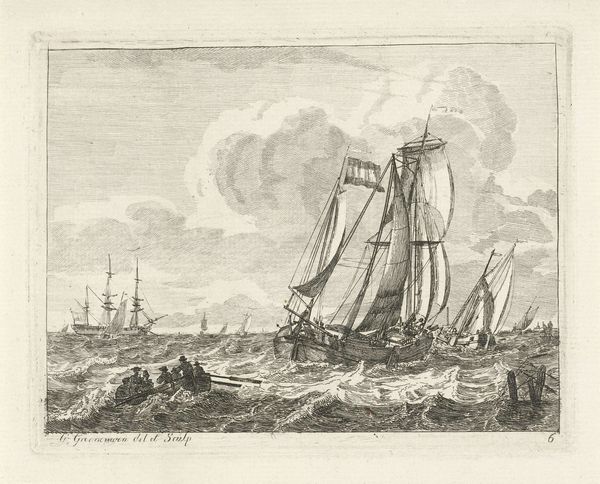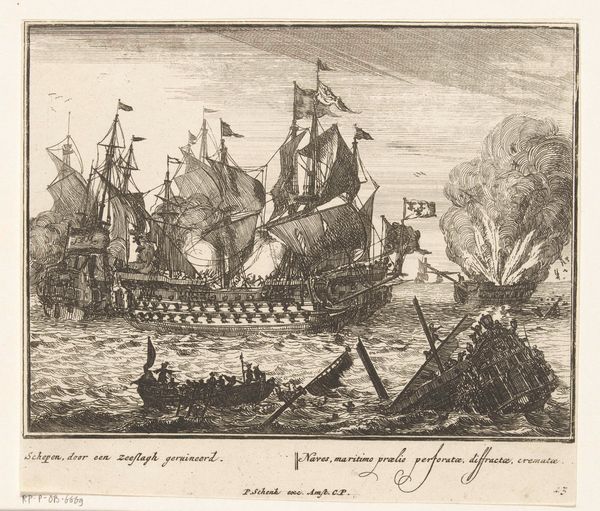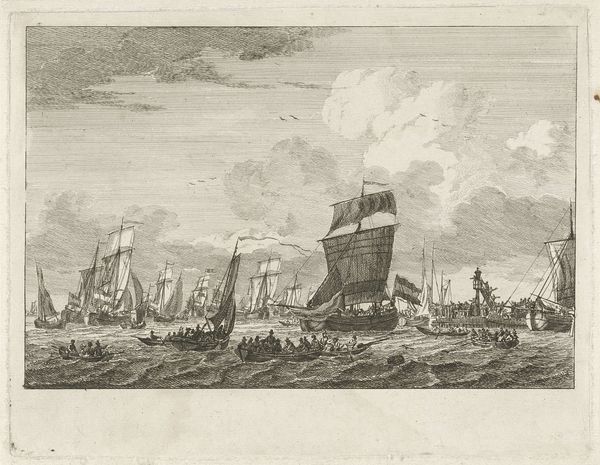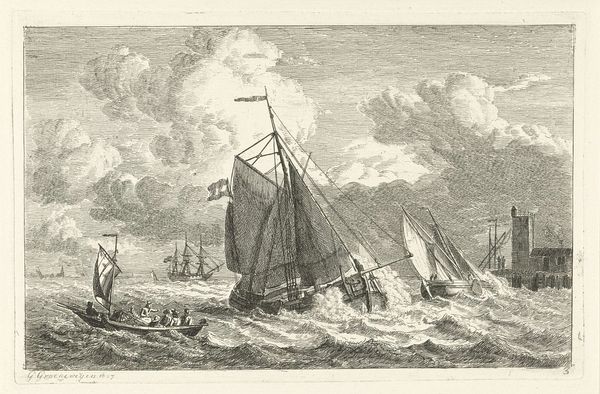
Het schip neemt deel aan een gevecht voor de kust, plaat nr. 11, ca. 1700 1690 - 1710
0:00
0:00
print, engraving
#
baroque
# print
#
old engraving style
#
landscape
#
history-painting
#
engraving
Dimensions: height 163 mm, width 189 mm
Copyright: Rijks Museum: Open Domain
Editor: This print, “Het schip neemt deel aan een gevecht voor de kust,” or "The ship participates in a battle off the coast", is by Sieuwert van der Meulen and dates from around 1700. It's an engraving, and the detail is incredible! It feels like a very dramatic, albeit small, window into a naval battle. How do you see the role of prints like this in their time? Curator: It's interesting that you focus on the "dramatic" aspect. Prints like these, circulated widely, played a key role in shaping public perception of military power and national identity. This image isn’t just documenting a naval battle; it’s participating in a wider discourse about Dutch maritime prowess and colonial ambition. Consider the intended audience. Who do you think was consuming these images? Editor: I imagine the middle class, people who were maybe investing in the voyages, but weren’t actually sailors or nobility? Curator: Exactly. They offered a readily accessible visual narrative of events. The composition, with the Dutch ship prominently displayed in the foreground, implicitly valorizes their seafaring capabilities. But what stories are *not* told? We need to question whose perspectives are missing, whose suffering is erased in the name of national pride. Does the print glorify military actions in a time of conflict? Editor: That's a great point. It does seem to celebrate the battle without showing any of the downsides. Maybe it's about nation-building more than documentation. Thinking about it that way makes the image much more complicated. Curator: Precisely. So when we view this, we shouldn't see it simply as a historical document, but as an active agent in constructing historical narratives, contributing to the formation of a collective Dutch identity during an era of intense maritime competition. It invites reflection on the intersections of art, power, and the creation of historical memory. Editor: This conversation shifted my understanding, I now see the historical narratives created around events rather than a pure depiction of it, that prints served to define the nations history.
Comments
No comments
Be the first to comment and join the conversation on the ultimate creative platform.
